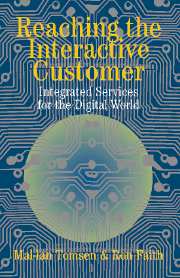6 - Balancing Act
Published online by Cambridge University Press: 11 August 2009
Summary
As devices become more common in the household, interactive services have evolved from a novelty into a common occurrence in people's lives. In order for integrated services to develop into a daily necessity, consumers need confidence that the technology and services are truly reliable. Integrated services provide the promise of a ubiquitous network with access to an array of information and media-rich services through increasingly powerful devices. Delivering on the promise involves significant challenges. The adoption of new devices and the resulting changes of consumer behavior create new expectations. Consumers expect reliability and ubiquitous access to service. Consumers also demand that services and devices will continue to improve with minimal inconvenience to the consumer when upgrading. This chapter explores the balancing act between increased consumer adoption and the requirements placed upon the providers of integrated services to meet such demands.
After reading this chapter, you should have a good understanding of the following topics:
The role of infrastructure for integrated services
Which enabling technologies contribute to next generation infrastructures
How continued consumer adoption affects learned behavior surrounding ubiquitous access, dependence, and continuous upgrading of services
FROM NOVELTY TO NECESSITY
As people continue to incorporate integrated services into their lives, consumers begin to rely on the information and services to a greater extent. This shift from novelty to necessity places substantial requirements upon the providers of integrated services. The concept of reliance on a service is not new.
- Type
- Chapter
- Information
- Reaching the Interactive CustomerIntegrated Services for the Digital World, pp. 115 - 138Publisher: Cambridge University PressPrint publication year: 2003



